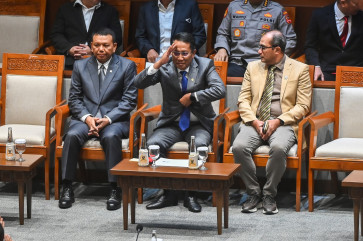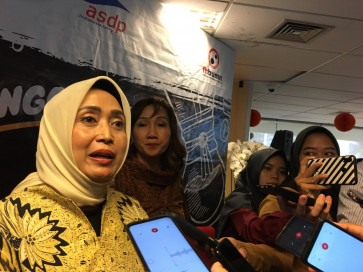Popular Reads
Top Results
Can't find what you're looking for?
View all search resultsPopular Reads
Top Results
Can't find what you're looking for?
View all search resultsHeritage language loss among young Indonesians overseas
Different from animals, human beings are endowed with the FOXP2 gene in the area F5 of the brain
Change text size
Gift Premium Articles
to Anyone
D
ifferent from animals, human beings are endowed with the FOXP2 gene in the area F5 of the brain. This gene enables the development of speech and language including mastery of two or more languages known as bilingualism and multilingualism, respectively. Numerous studies on bilingualism have been conducted, models built and policies made.
Some of the studies focus on concerns about the displacement or replacement of an existing language by another — also known as language shift in which “an ethnic group gradually moves its preference and use of language from its original ethnic language to the sociologically dominant language” (August and Hakuta, 1997).
Given the global migration explosion, it is noticeable that immigrants face the challenge of their heritage language (HL) being subsumed because their offspring place more value on the more prestigious and socially desirable languages of their host countries.
A distinct language shift from HL, or L1 (first language), to L2 (second language) usually occurs in a very short period of time.
Lieberson, Dalto, and Johnston (1975) reported that “the amount of minority language loss occurring within one generation in the US would require some 350 years in other nations.”
Since the second half of the past century, thousands of Indonesian immigrants have lived in the US for two generations or more. In my encounters with some Indonesian families in several states in the US, I have found it disheartening that almost none of their school-age children can still speak Indonesian.
The language shift has occurred in only one generation. It is even more alarming that there appears to be no regret over this heritage language loss among young Indonesians overseas.
Many families just consider this fact inevitable perhaps because they feel it is more prestigious to be proficient in English and believe that mastery of English is an asset to enhance social and economic development in the host country.
The Indonesian immigrant community is certainly not the largest in the US. The two largest groups are Spanish-speaking and Chinese immigrants, by comparison these groups have come to the realization of the importance of the revitalization of their heritage languages.
As a matter of fact, social and political movements towards policies on bilingual education in the US have been spearheaded by educators and researchers who have drawn their insights from data taken mostly from Latino children’s language and cognition development (E. Garcia and J. Nanez, Bilingualism and Cognition).
While opponents of bilingual education have their own arguments and have managed to block federal mandates on bilingual education in California and Arizona, Spanish has been the means of communication within certain communities and one of the favorite foreign language choices in schools.
Likewise, the Chinese communities — endorsed by their Consulates — have been eager to organize Chinese language schools and after-school programs to ensure mastery of their heritage language among their offspring.
The importance of retaining the heritage language is grounded on numerous research studies on bilingualism and cognition. There are at least three compelling reasons for bilingual education.
First, as Nanez, Padilla and Lopez-Maez (1992) point out, “balanced bilinguals outperformed monolinguals on both verbal and nonverbal measures of intelligence when variables such as socioeconomic status, language proficiency, sex and age were controlled.”
Numerous other studies also provide support for the cognitive benefits of bilingualism throughout a child’s development.
Second, contrary to a common myth that young children are confused when learning two languages simultaneously or sequentially, studies show that the ability to acquire multiple languages is innate as human beings are endowed by FOXP2 genes in the brain. The last and most important reason is the use of heritage language as an expression of cultural identity.
Language is a unique human method to communicate feelings and needs. It binds relationships within a family, community and nation. When a person is uprooted from his or her cultural heritage, he or she is bound to feel a sense of alienation at some point in life.
At a small and personal level, a person misses a great deal about his or her own legacy and feels the anguish when he or she is not able to communicate and connect with a grandparent or a great-grandparent through a common language.
Hopefully, the awareness of the importance of retaining Indonesian as a heritage language will not emerge too late.
Indonesian community groups overseas should serve not only as support groups but also as bridges between their young people and their cultural heritage.
Families can and should make conscious decisions and consistent efforts in using Indonesian as their home language.
Indonesian Consulates, especially in developed countries, can play an important role beyond their traditionally administrative and ceremonial roles.
Endorsing Indonesian language and culture classes overseas and sponsoring root-searching holiday programs for children of Indonesian immigrants to visit Indonesia and relearn their culture can be placed as part of the agenda to reach out to the Indonesian diaspora and redefine our nationalism.
The writer, professor of education at Widya Mandala Catholic University, Surabaya, is currently visiting scholar at UC Berkeley on Program Academic Recharging (PAR) grant from the Indonesian Ministry of Education.










